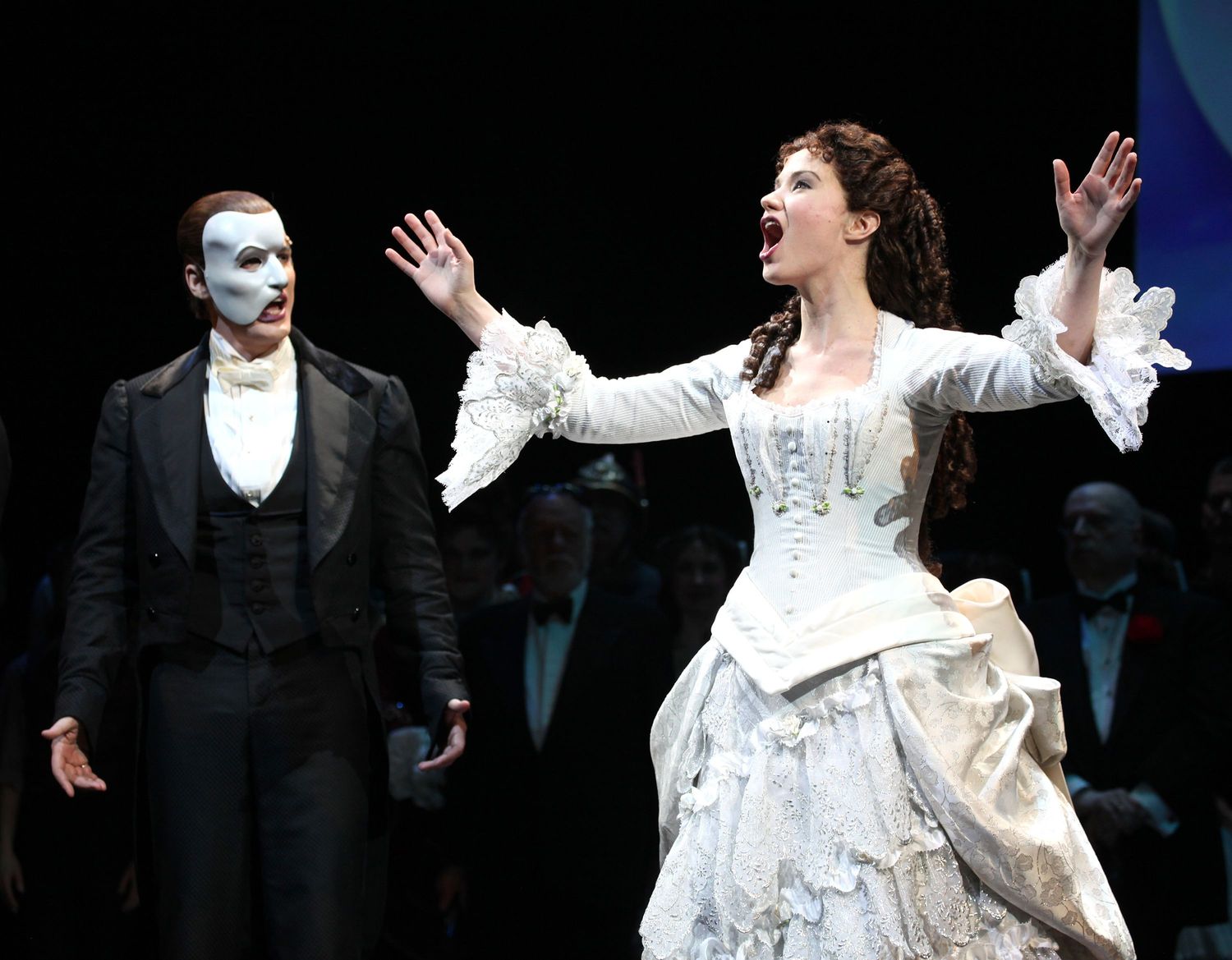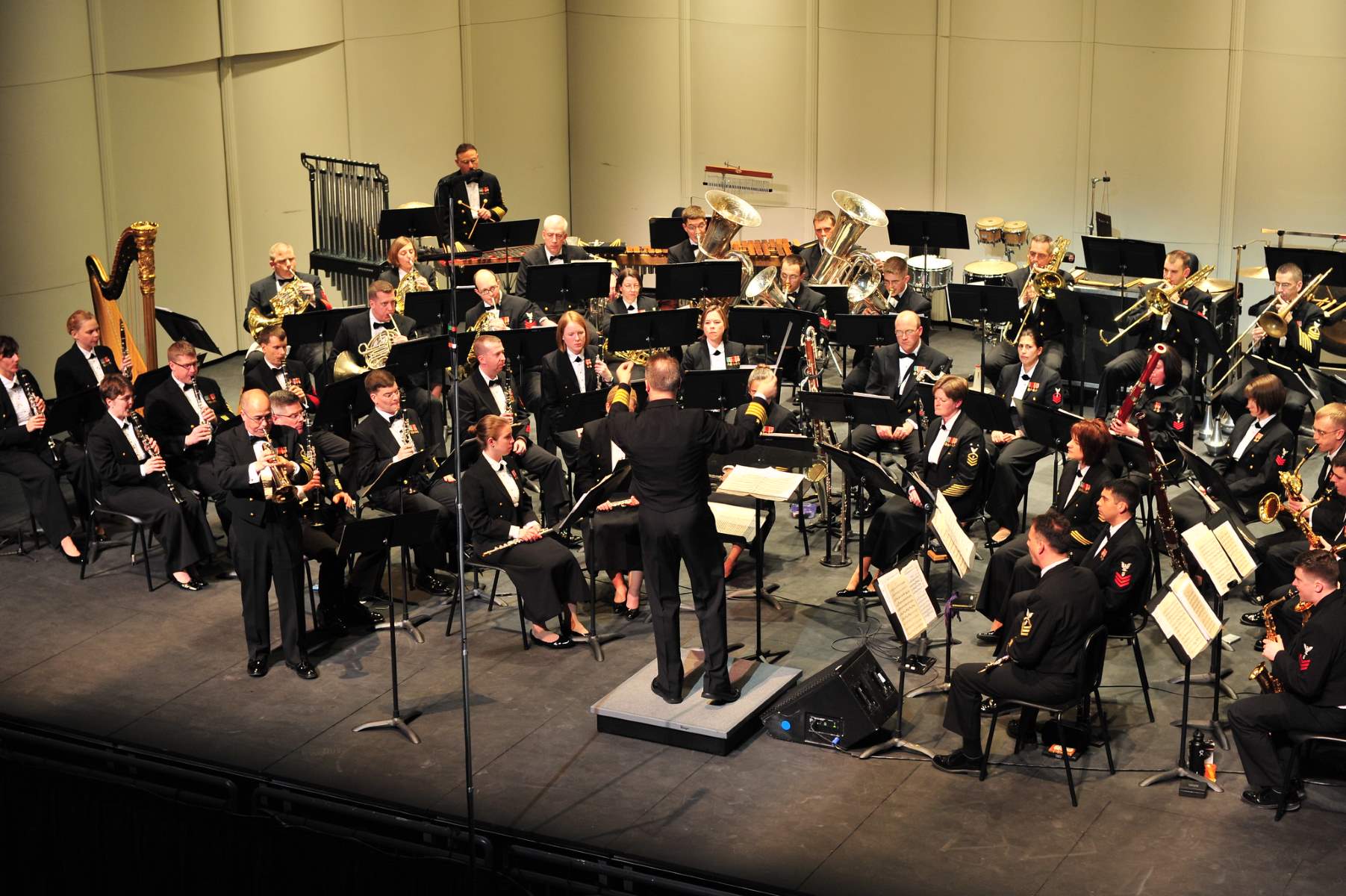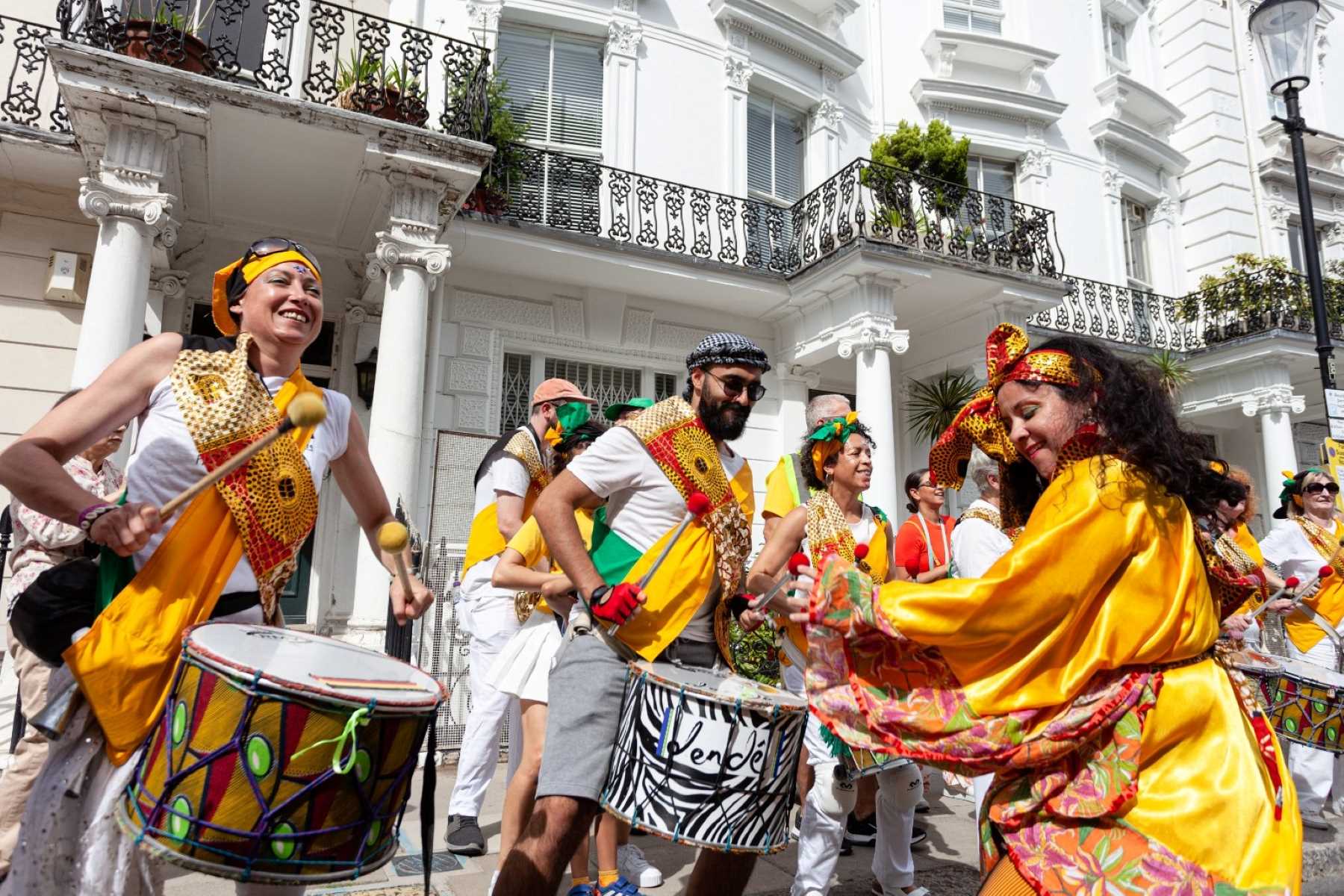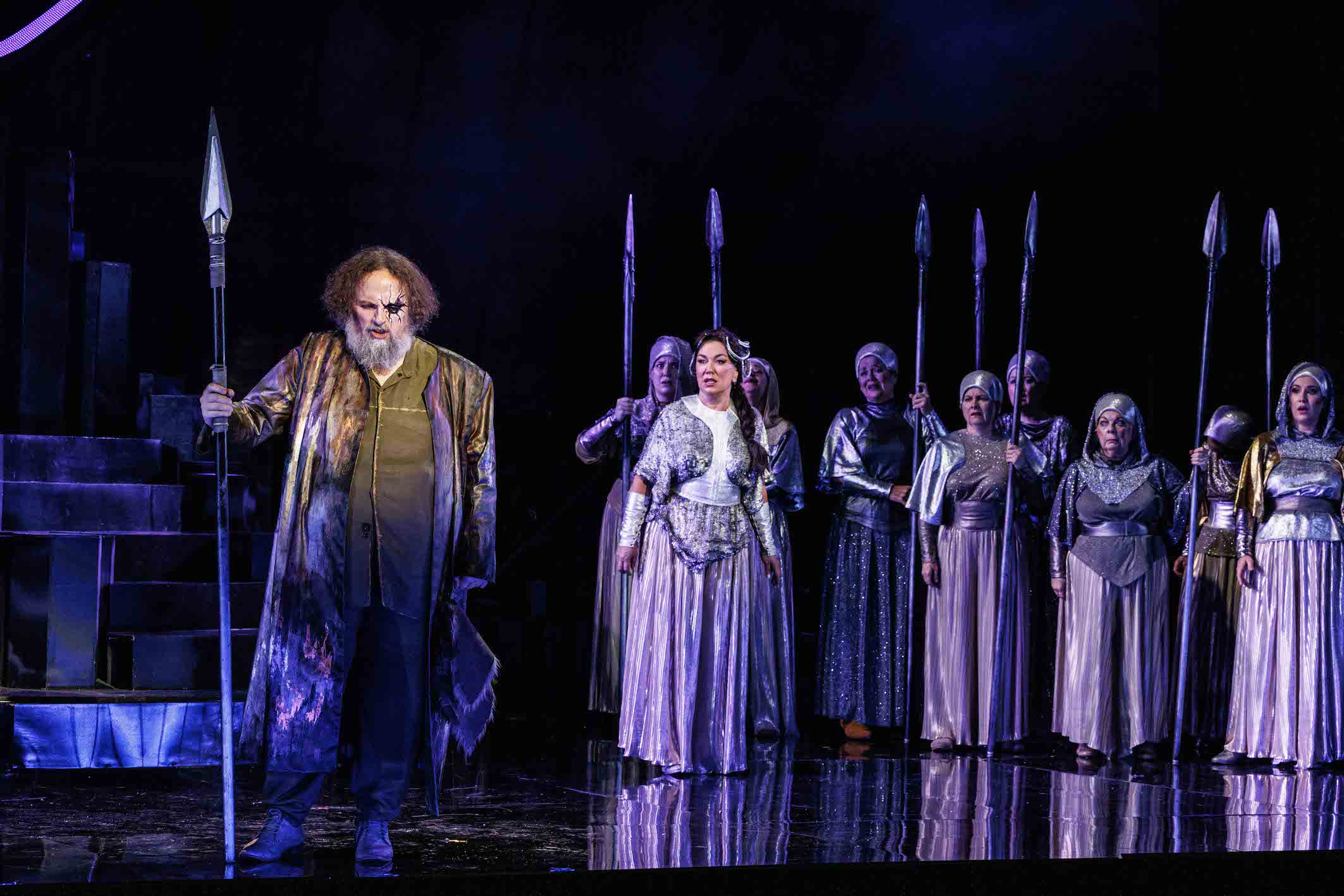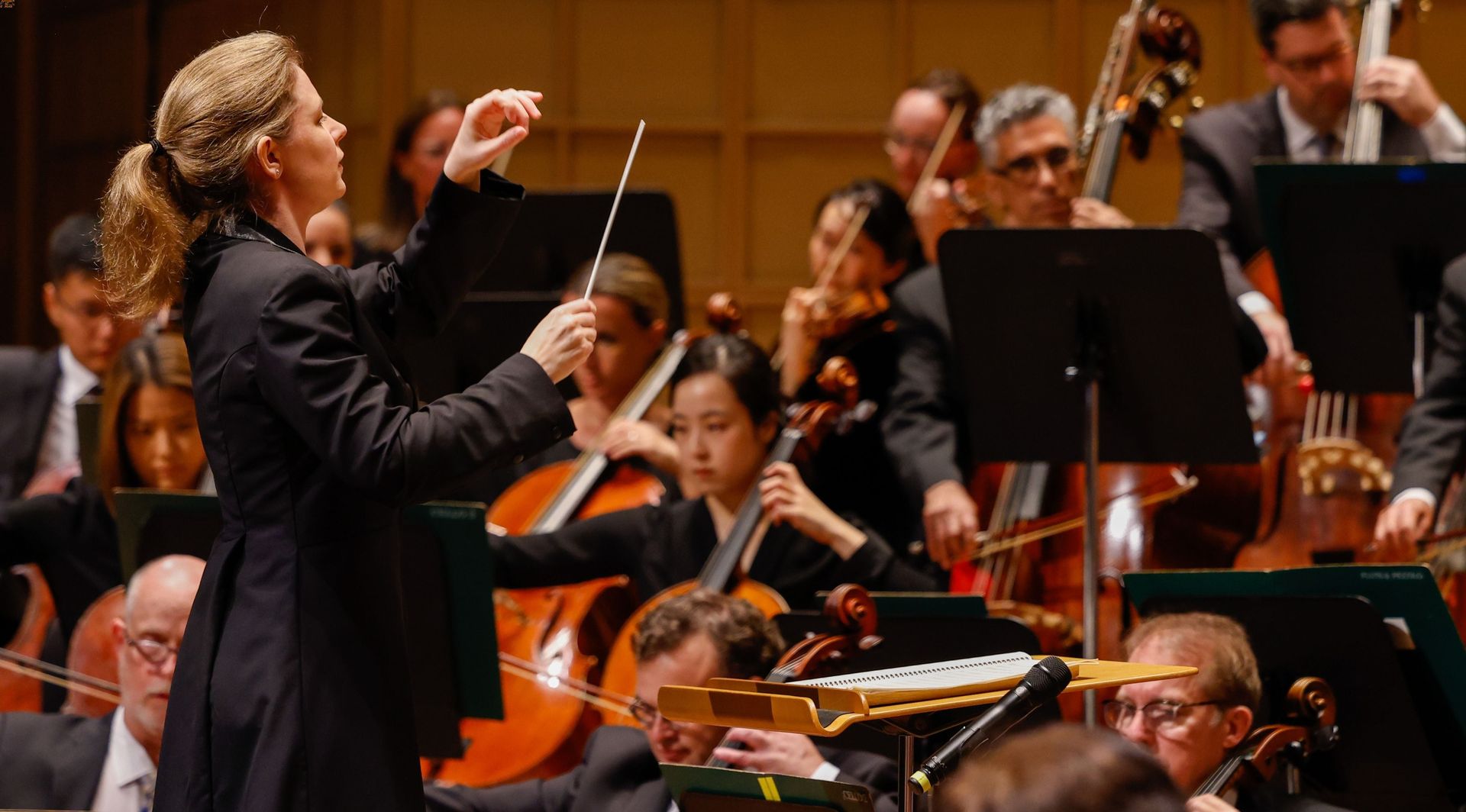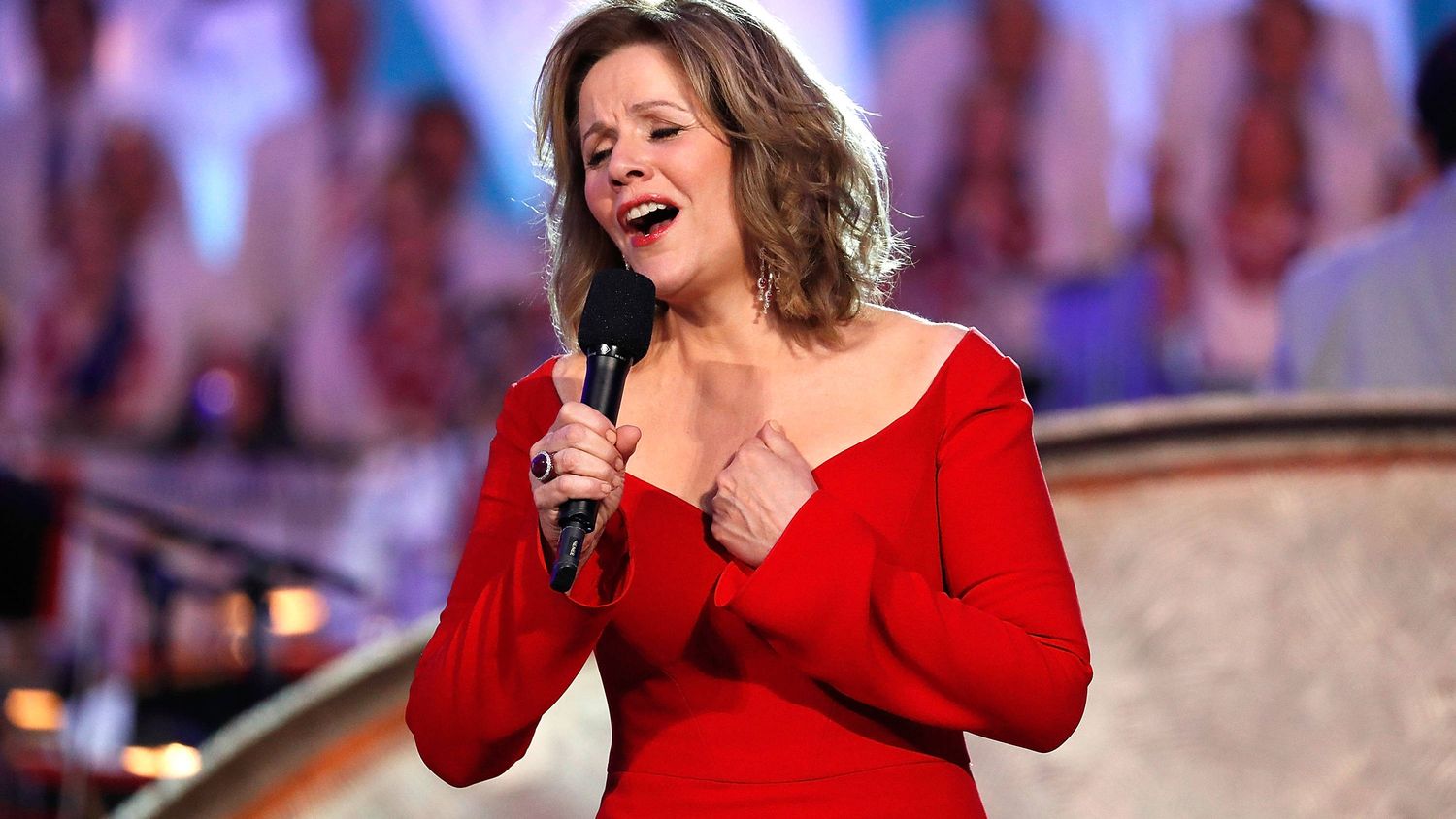Home>Events & Info>Opera>How Did Opera Buffa Differ From Opera Seria?
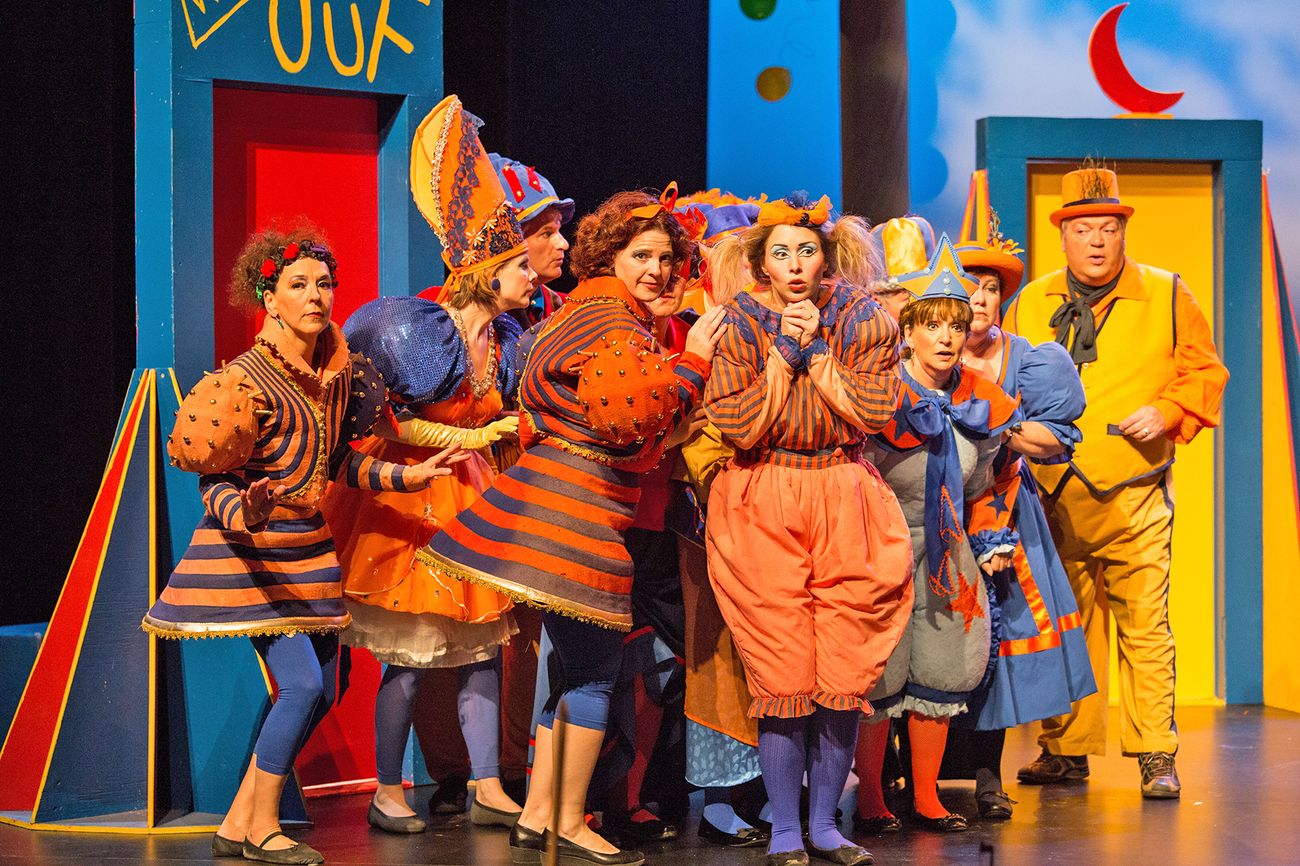

Opera
How Did Opera Buffa Differ From Opera Seria?
Modified: January 22, 2024
Discover the key differences between Opera Buffa and Opera Seria. Learn how these two distinct genres of opera showcase different styles and themes.
(Many of the links in this article redirect to a specific reviewed product. Your purchase of these products through affiliate links helps to generate commission for AudioLover.com, at no extra cost. Learn more)
Table of Contents
Introduction
Welcome to the fascinating world of opera! Opera is a unique and captivating art form that combines music, storytelling, and theatricality to create an immersive experience for the audience. Within the vast realm of opera, there are various subgenres, each with its own distinct characteristics and style. Two prominent genres that emerged during the Baroque period were Opera Buffa and Opera Seria.
Opera Buffa, also known as “comic opera,” was a lighthearted and comedic form of opera that gained popularity in the 18th century. On the other hand, Opera Seria, also referred to as “serious opera,” was a more solemn and dramatic style of opera that dominated the musical scene during the same period. While both genres shared the common elements of music and storytelling, they differed significantly in terms of plot, subject matter, characterization, style, musical structure, and cultural significance.
In this article, we will delve into the distinctive features of Opera Buffa and Opera Seria, explore the differences in their storylines, characters, musical techniques, and examine their respective influences on the development of opera as an art form.
Definition of Opera Buffa
Opera Buffa, translated as “comic opera” from Italian, is a genre of opera that emerged in the 18th century in response to the popularity of Opera Seria. This lighthearted and humorous form of opera aimed to entertain the audience through witty dialogue, comedic situations, and relatable characters. Opera Buffa was often characterized by its use of vernacular language, as opposed to the formal and poetical language used in Opera Seria.
One of the distinguishing features of Opera Buffa is its focus on the everyday lives of ordinary people. Unlike the noble and mythological themes often found in Opera Seria, Opera Buffa showcased the humorous and sometimes absurd situations encountered by average individuals. The plots typically revolved around love triangles, mistaken identities, and comedic misunderstandings.
In Opera Buffa, the characters were often portrayed as relatable and comical figures. While there were still social hierarchies presented, the characters in Opera Buffa were not necessarily royalty or gods but instead, represented the common folks. The audience could easily relate to their struggles, quirks, and comedic mishaps.
The music in Opera Buffa embodied the playful and light-hearted nature of the genre. A key musical aspect of Opera Buffa was the use of ensemble pieces such as duets, trios, and quartets, where multiple characters interacted and engaged in witty exchanges. These ensemble pieces often included fast-paced, intricate vocal lines that showcased the characters’ comedic interactions and the overall liveliness of the opera.
The presence of comic relief through comedic characters was also a characteristic of Opera Buffa. These characters, known as “buffo” or “comic” characters, provided the audience with laughter and humorous moments. The buffo often employed physical comedy, verbal repartee, and slapstick humor to engage the audience and add levity to the performance.
Opera Buffa was immensely popular among the middle class due to its relatable themes, linguistic accessibility, and humorous nature. It provided a welcome departure from the seriousness of Opera Seria and offered a form of entertainment that resonated with a broader audience. Through its comedic brilliance and ability to capture the essence of everyday life, Opera Buffa played a significant role in shaping the development and evolution of opera as an art form.
Definition of Opera Seria
Opera Seria, translated as “serious opera” from Italian, was a dominant genre in the 18th century. Unlike Opera Buffa, Opera Seria focused on serious and dramatic subjects, often drawing inspiration from mythology, ancient history, and noble characters. It aimed to evoke emotions such as awe, admiration, and sadness from the audience through its grandeur and emotional depth.
One of the defining characteristics of Opera Seria was its use of formal and poetic language. The librettos were often written in elaborate verse, reflecting the elevated language used by the noble characters portrayed in the operas. This distinguished Opera Seria from Opera Buffa, which favored vernacular language to connect with a wider audience.
The plots of Opera Seria often revolved around themes of love, honor, and the conflict between good and evil. They typically featured noble protagonists and antagonists, with the storyline focusing on their struggles and internal conflicts. Mythological and historical figures, such as gods, goddesses, kings, and queens, were common in Opera Seria, adding a sense of grandeur and nobility to the narrative.
In terms of musical structure, Opera Seria emphasized the virtuosic display of vocal prowess. Arias, the solo musical numbers, were the centerpiece of Opera Seria, allowing the singers to showcase their technical skills and express the characters’ emotions in a profound and powerful manner. These arias were often elaborate and demanding, featuring intricate coloratura passages and emotional depth.
The musical style of Opera Seria was characterized by its formal and symmetrical structure. The music followed a set pattern, consisting of recitative passages that furthered the plot and showcased dialogue, followed by an aria that allowed the character to express their emotions. This repetitive structure added a sense of order and elegance to Opera Seria.
Opera Seria catered primarily to the aristocracy and the upper social classes, who were the primary patrons of the arts during that time. Its grand spectacle, elevated language, and noble themes appealed to the refined tastes of the elite. However, as Opera Buffa gained popularity among the middle class, Opera Seria started incorporating elements of comedy and lighter moments to cater to a wider audience.
Despite its eventual decline in popularity, Opera Seria played a pivotal role in the development of opera as an art form. It showcased the possibilities of vocal technique and expression, paving the way for future innovations in the genre. Opera Seria’s focus on noble subjects and intense emotions laid the foundation for the Romantic era of opera, where the exploration of human emotions and individualism became central themes.
Differences in Plot and Subject Matter
Opera Buffa and Opera Seria differ significantly in their plotlines and subject matter. While Opera Buffa focuses on humorous and everyday situations, Opera Seria delves into serious and dramatic themes. Let’s explore the differences between the two genres in terms of plot and subject matter.
Opera Buffa often revolves around common individuals and their relatable experiences. The plotlines involve love triangles, mistaken identities, and comedic misunderstandings. The characters in Opera Buffa are often ordinary people, and the stories depict their interactions with humor and light-heartedness. The aim of Opera Buffa is to entertain the audience through witty and comical situations.
On the other hand, Opera Seria explores more elevated and noble subjects. The plots usually draw inspiration from mythology, ancient history, and noble figures. The characters in Opera Seria are often gods, goddesses, kings, queens, or historical heroes. The stories focus on themes of love, honor, and moral dilemmas. Opera Seria aims to evoke deep emotions from the audience, exploring the complexities of human experiences and the struggle between good and evil.
Opera Buffa primarily appeals to a broader audience, including the middle class. Its relatable plots and comedic elements make it accessible and enjoyable for a wide range of viewers. It provides light-hearted entertainment and often incorporates elements of satire to critique societal norms.
On the other hand, Opera Seria caters more to the aristocracy and the upper social classes. Its grandeur, formal language, and nobility-themed plots resonate with the refined tastes of the elite. Opera Seria aims to awe the audience through its emotional depth and showcase the vocal and dramatic skills of the performers.
Overall, the stark contrast in plot and subject matter between Opera Buffa and Opera Seria reflects the different intentions and target audiences of the two genres. Opera Buffa aims to entertain and amuse with its comedic plots and relatable characters, while Opera Seria seeks to provoke deep emotions and admiration through its noble themes and elevated storytelling.
Differences in Characterization and Style
The characterization and style in Opera Buffa and Opera Seria also differ significantly. While Opera Buffa focuses on relatable and humorous characters, Opera Seria portrays noble and heroic figures. Let’s explore the differences in characterization and style between these two opera genres.
In Opera Buffa, the characters are often ordinary individuals from different walks of life. They are relatable and presented with human flaws and quirks. The comedic elements of Opera Buffa are enhanced through the characterization, as the characters find themselves in humorous situations and engage in witty dialogue. Physical comedy and slapstick humor are also common in Opera Buffa, adding to the entertainment value.
On the other hand, Opera Seria features characters who are larger than life, often drawn from mythology, ancient history, or noble ranks. These characters possess noble attributes such as bravery, honor, and moral virtue. They grapple with internal conflicts and moral dilemmas, showcasing their complexities and inner struggles. Opera Seria aims to portray the heroic and noble qualities of these characters, evoking admiration and emotional connection from the audience.
Stylistically, Opera Buffa adopts a more informal and accessible language. The librettos often utilize vernacular languages, making it easier for the audience to understand and connect with the characters. The music in Opera Buffa is characterized by its playful and lively nature, with fast-paced melodies and comedic timing. The use of ensemble pieces, such as duets or quartets, adds to the overall liveliness and interaction between the characters.
In contrast, Opera Seria adopts a more formal and poetic language. The librettos are often written in elaborate verse, reflecting the elevated and sophisticated nature of the characters. The music in Opera Seria focuses on showcasing the vocal prowess of the performers. The arias, solo musical numbers, are often demanding with intricate vocal techniques, allowing the characters to express their deep emotions and highlight their theatrical skills.
Overall, Opera Buffa and Opera Seria differ in their characterization and style. Opera Buffa presents relatable and comedic characters in a light-hearted and accessible manner, while Opera Seria portrays noble and heroic figures in a more formal and elevated style. These differences in characterization and style contribute to the unique qualities and appeal of each genre, allowing them to cater to different tastes and audiences.
Differences in Musical Structure and Techniques
The musical structure and techniques employed in Opera Buffa and Opera Seria also exhibit notable contrasts. While both genres share the common elements of vocal performance and orchestration, they differ significantly in their approach to musical composition. Let’s explore the differences in musical structure and techniques between Opera Buffa and Opera Seria.
In Opera Buffa, the music is characterized by its light-hearted and lively melodies. The emphasis is on entertaining the audience through catchy tunes and engaging rhythms. Opera Buffa often features ensemble pieces, such as duets, trios, and quartets, where multiple characters interact and engage in witty exchanges. These ensemble pieces allow for the dynamic interplay of voices and create lively and humorous moments within the opera.
The arias in Opera Buffa are often shorter in length and focus on conveying the characters’ emotions in a direct and immediate manner. The musical structure in Opera Buffa is less formal compared to Opera Seria, with a more flexible approach that allows for comedic timing and improvisation. This allows the performers to engage with the audience and add a sense of spontaneity to the performance.
In contrast, Opera Seria follows a more formal and structured musical approach. The arias in Opera Seria are typically longer and more complex, showcasing the technical skills and vocal range of the performers. The music aims to evoke a range of emotions, from intense passion and longing to despair and triumph. Opera Seria often employs da capo arias, where the performers repeat the initial section of the aria after a contrasting middle section, allowing for embellishments and vocal displays.
The orchestration in Opera Buffa tends to be lighter, with a focus on supporting the vocal lines and creating a lively and energetic atmosphere. The use of woodwinds, strings, and percussion instruments adds to the playful and upbeat nature of the music. The orchestra serves as a backdrop to enhance the comedic moments and highlight the interactions between the characters on stage.
On the other hand, the orchestration in Opera Seria is often grand and rich. The orchestra takes on a more prominent role, providing a lush and dramatic backdrop to the singers’ performances. The use of brass and larger string sections adds to the richness and depth of the music. The orchestra in Opera Seria works in harmony with the vocal lines, adding emotional depth and intensity to the performances.
Overall, the musical structure and techniques employed in Opera Buffa and Opera Seria reflect the respective genres’ intentions and effects. Opera Buffa focuses on entertainment, employing catchy melodies and ensemble pieces to engage the audience with its humor and liveliness. Opera Seria, with its formal and structured musical approach, aims to evoke deep emotions and showcase the technical skills and dramatic capabilities of the performers. The contrast in musical styles adds to the distinct character and appeal of each genre.
Historical Context and Cultural Significance
Opera Buffa and Opera Seria emerged during a time of significant cultural and historical changes in the 18th century. Understanding the historical context helps to appreciate the cultural significance of these opera genres.
In the 18th century, opera was highly influential and served as a form of entertainment and social commentary for the upper classes. Opera Seria, with its noble subjects and formal language, catered to the aristocracy who were the primary patrons of the arts. It reflected the values and ideals of the ruling classes, emphasizing virtues such as honor, loyalty, and moral righteousness.
Opera Buffa, however, gained popularity among the rising middle class in urban areas. With its relatable characters and humorous plots, it provided a welcome departure from the seriousness and grandeur of Opera Seria. Opera Buffa addressed the everyday concerns and struggles of ordinary people, often incorporating elements of satire to critique societal norms and conventions.
The development of Opera Buffa coincided with the rise of the Enlightenment movement, which emphasized reason, individualism, and the rejection of traditional aristocratic values. Opera Buffa reflected these changing ideals by portraying common people as heroes and presenting the absurdity and folly of the higher social classes. It offered a form of social commentary that resonated with the growing middle-class audience.
Furthermore, Opera Buffa was performed in the vernacular language, making it more accessible to a wider audience. This language choice marked a departure from the elitism of Opera Seria, which utilized formal and poetic language. By using the language of the people, Opera Buffa democratized opera and helped bridge the gap between social classes.
The cultural significance of Opera Buffa and Opera Seria lies in their respective roles in shaping the development of opera as an art form. Opera Buffa’s emphasis on relatable stories, comedic elements, and ensemble performances set the stage for the later development of comic opera. It paved the way for composers such as Mozart to further explore the potential of combining music and comedy.
Opera Seria, with its focus on nobility, grandeur, and emotional depth, laid the foundation for the transition into the Romantic era of opera. The exploration of intense emotions and individualism, which became central themes in the Romantic period, can trace its roots back to Opera Seria.
Both Opera Buffa and Opera Seria left a lasting impact on the development of opera, influencing subsequent generations of composers and shaping the way stories are told through music and theater. Their historical context and cultural significance highlight the dynamic evolution of opera as an art form and its ability to reflect and respond to the changing social and cultural landscapes.
Impact on Opera Development
The genres of Opera Buffa and Opera Seria had a profound impact on the development of opera as an art form, influencing its evolution in various ways.
Opera Buffa played a significant role in broadening the appeal of opera and reaching a wider audience. By focusing on relatable characters, everyday situations, and comedic elements, Opera Buffa appealed to the rising middle class and spoke to their experiences. This popularity among a broader audience contributed to the democratization of opera, breaking down barriers of social class and making opera more accessible.
Furthermore, Opera Buffa introduced a new dimension to opera, showcasing the possibilities of blending music and comedy. It demonstrated that opera could be entertaining and light-hearted, while still conveying meaningful messages and social critiques. This paved the way for the development of the comic opera genre, which continued to flourish in the centuries to come.
Opera Seria, with its focus on noble and heroic subjects, brought a level of grandeur and emotional depth to opera. It highlighted the potential of opera to evoke intense emotions and tell stories of love, honor, and moral dilemmas. Opera Seria laid the foundation for the Romantic era of opera, where the exploration of human emotions became a central theme.
Additionally, the developmental impact of Opera Seria can be seen in its influence on vocal and musical techniques. The demand for highly skilled vocal performances in Opera Seria led to advancements in vocal training and technique. Singers were challenged with intricate and demanding arias that showcased their technical abilities and virtuosity.
The contrasting styles of Opera Buffa and Opera Seria also sparked experimentation and innovation in opera composition. Composers began to explore the integration of comedic and serious elements, creating works that blended the best of both genres. This fusion of styles led to the emergence of operas that combined humor, depth, and emotional complexity, further enriching the art form.
Furthermore, the impact of Opera Buffa and Opera Seria extended beyond the 18th century. Their influence can be observed in later operatic compositions, as their conventions and techniques continued to shape the works of composers in the following centuries. The comedic and dramatic elements introduced by Opera Buffa and Opera Seria have remained integral to the operatic repertoire, lending depth, entertainment, and emotional resonance to countless productions.
Overall, Opera Buffa and Opera Seria made significant contributions to the development of opera as an art form. They expanded the audience base, introduced new dimensions of storytelling, influenced vocal and musical techniques, and inspired further experimentation and innovation in opera composition. Their lasting impact can still be seen and appreciated in modern-day opera performances, demonstrating the enduring legacy of these two captivating genres.
Conclusion
Opera Buffa and Opera Seria, two prominent genres that emerged during the Baroque period, contributed significantly to the development and evolution of opera as an art form. Their contrasting characteristics in terms of plot, subject matter, characterization, style, musical structure, and cultural significance have left a lasting impact on the operatic repertoire.
Opera Buffa, with its lighthearted and comedic storytelling, brought relatable characters and everyday situations to the stage. It entertained audiences with its humorous plots, witty dialogue, and ensemble performances. Opera Buffa played a crucial role in broadening the appeal of opera, reaching a wider audience, and establishing the foundation for the comic opera genre.
On the other hand, Opera Seria focused on serious and dramatic subjects, often drawing inspiration from mythology and history. It showcased noble and heroic characters, exploring themes of love, honor, and moral dilemmas. Opera Seria emphasized vocal and musical techniques, creating elaborate arias and grandiose orchestration to convey deep emotions and captivate audiences.
The historical context surrounding the emergence of these genres, including the rise of the middle class and the influence of the Enlightenment movement, further shaped their cultural significance. Opera Buffa addressed societal norms through satire, while Opera Seria reflected the values and aspirations of the aristocracy.
Both Opera Buffa and Opera Seria contributed to the evolution of opera by pushing the boundaries of storytelling, vocal performance, and musical composition. These genres paved the way for future innovations in opera, including the blending of comedic and serious elements, the exploration of intense emotions, and the creation of dynamic character portrayals.
While Opera Buffa and Opera Seria may have different styles and target audiences, their impact on opera as an art form is undeniable. They expanded the scope of opera, making it accessible to a broader range of people and showcasing its capacity to entertain, provoke emotions, and convey profound messages.
Even to this day, the influence of Opera Buffa and Opera Seria can be seen and felt in opera productions worldwide. Their legacies continue to inspire composers, performers, and audiences, ensuring that the traditions and innovations introduced by these genres will endure for generations to come.



